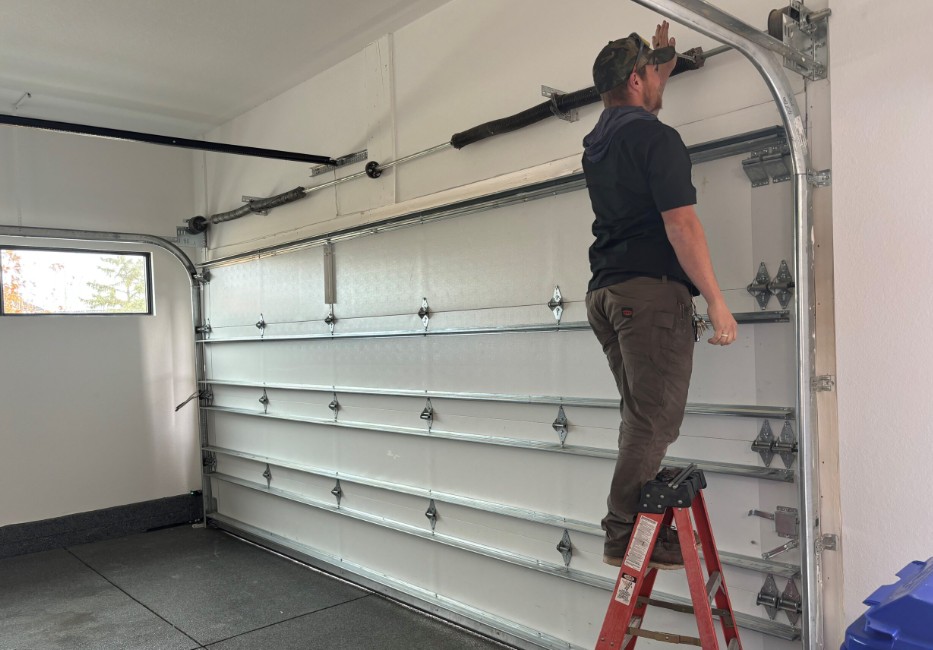For furniture retail, supply chain chaos has become ‘normalized’

Last year — amid port backups, container shortages and other supply chain nightmares — retailers and brands turned to the skies, sending demand for air cargo in 2021 up nearly 7{73375d9cc0eb62eadf703eace8c5332f876cb0fdecf5a1aaee3be06b81bdcf82} compared to 2019 by one estimate.
Shipping shirts and shoes, or Beanie Babies, by airplane has been an expensive but plausible workaround for many facing shipping bottle necks. Shipping couches or dining room sets by air — not so much.
Being larger, heavier, harder to move, more complex and crafted, and with manufacturing often geographically clustered, furniture and other home furnishings present a unique array of supply chain challenges even in normal times. The pandemic exacerbated all of them and created a host of new challenges.
Pressure and backups have moved through the supply chains along with the goods they were built for. “First, it was manufacturers, then it was inputs, getting the cloth and the springs and the leather,” Overstock.com CEO Jonathan Johnson said in an interview. “Then it was Asian ports, then it was U.S. ports.”
The industry is still working through backups and backlogs, though retailers have adapted, in part by simply accepting uncertainty and ocean shipping delays as a fact of life for the moment.
“It’s pretty much normalized to something that’s inconsistent, which means everyone just has to build a little more time into their supply chain,” Rick Jordon, senior managing director with FTI Consulting, said in an interview.
Williams-Sonoma Inc. CEO Laura Alber told analysts as much in March about the global supply chain challenges for the sector. “[O]ur perspective is that this year is going to be about the same as last year, and we thought nothing could be worse than last year,” Alber said.
A ‘perfect storm’
Jordon said that the biggest challenges for the furniture supply chain right now are unpredictability in ocean shipping and pain at the ports. “That’s been the biggest pain point for a while,” Jordon said. “A 20-day transit would be somewhere around 65 days, then it’s 35. And then it’s back to 80.”
As outlined by Andrew Csicsila, a managing director in AlixPartners’ consumer products practice, last year saw a spike in demand for home goods as consumers refurnished their homes while container shortages and “chokeholds” at ports in Asia and then in the U.S. led to the widespread delays.
“When the Port of Long Beach in Los Angeles looks like the 405 freeway, backed up out into the ocean, that ‘six weeks to home’ doesn’t happen.”

Jonathan Johnson
CEO of Overstock.com
Price spikes for commodities that feed into furniture materials, including oil and lumber, have exacerbated the financial pain along with freight inflation. At La-Z-Boy, CEO Melinda Whittington told analysts that shortages of component parts such as microchips and actuators disrupted the company’s manufacturing operations for higher-end products.
Shipping delays on the ocean obviously mean delays for customers as well, and for furniture they’ve gotten longer as the systemic backups have worn on. “People are saying it’s the perfect storm,” Csicsila said. “Supply chain officers are getting so much pressure from their CEOs to improve service levels.”
As Csicsila noted, expected delays have gone from weeks, to perhaps within three months, to three to six months, and so on. “Now it’s: ‘We hope it’s going to get here within six months,'” Csicsila said. “They [i.e., retailers] are being a little more honest. They’re trying to figure out where products are in the actual supply chain, but nailing down delivery dates is difficult.”
This is where supply chain and managing customer relationships become thoroughly entwined.
Johnson said Overstock has, for most items, maintained a policy through the pandemic of not selling anything on its site that is “on the water.” That means 99{73375d9cc0eb62eadf703eace8c5332f876cb0fdecf5a1aaee3be06b81bdcf82} of the goods on its site are in a warehouse domestically, ready to be picked, packed and shipped to a customer’s house in days. The online home goods site relies on drop shipping, with a stable of some 3,500 vendors to serve its customers.
“A lot of companies historically have been able to say, ‘Well, once it’s on the water, we know it’s six weeks to your house,” Johnson said. “When the Port of Long Beach in Los Angeles looks like the 405 freeway, backed up out into the ocean, that ‘six weeks to home’ doesn’t happen.”
Despite the sector’s challenges, many of the larger furniture retailers today are quite healthy. RapidRatings data provided to Retail Dive shows improvement in the analysis firm’s near-term financial health scores in a cohort of category players.
Of those companies — Williams-Sonoma Inc., Ethan Allen, RH, La-Z-Boy, Overstock, Basset Furniture and Wayfair — all saw their financial health ratings improve over the past 12 months with the lone exception of Wayfair, whose score fell 25 points on a 100-point scale.
All of those companies except Wayfair also had strong to very strong scores in a medium-term measure of core health.
‘We hope it’s going to get here within six months’
Unlike apparel and other retailer of softline and smaller hardline goods, it’s safe to say most furniture retailers don’t have the advantage of puddle jumping over the ocean via air cargo. Conference calls and filings for publicly traded furniture mainstays like Williams-Sonoma, Wayfair and La-Z-Boy made no mention of air freight in their most recent 10-Ks and conference calls.
“That’s the challenge of furniture, right?” Jordon said of the dearth of transport options.
That leaves waiting, planning and sourcing shifts as the main tools for furniture sellers. Along with building lead times into expectations, retailers have built up their inventory as a hedge against disruption. “You’ll see it in other things like the cost of warehousing or how fast new warehousing is absorbed into the market,” Jordon said. “Right now warehousing is at record highs.”
Csicsila noted that building up inventory has been key to meeting consumer (and CEO) demand from supply chains. “A lot of companies are building up inventory, ordering more than what they [need] so they have inventory in stock to counter delays in service,” he said.
At La-Z-Boy, Whittington told analysts the company was working toward “protective inventory builds” and has spent $83 million to push up inventory levels to manage supply chain challenges. RH spent $191 million to increase its inventory in the fourth quarter, $60 million of which was specifically to deal with increased transit times and ship backlogs, CEO Gary Friedman told analysts in March.
As Csicsila noted, companies will have to move that inventory ultimately. A build-up combined with a demand slowdown could lead to painful (for retailers) discounting down the road.
But the chase for inventory still goes on. At Williams-Sonoma, on-hand inventory was up nearly 15{73375d9cc0eb62eadf703eace8c5332f876cb0fdecf5a1aaee3be06b81bdcf82} but down by 13{73375d9cc0eb62eadf703eace8c5332f876cb0fdecf5a1aaee3be06b81bdcf82} on a two-year basis, Chief Financial Officer Julie Whalen told analysts.
While most furniture is bound for the ocean, players in the space have adjusted by changing up the ports of entry to bypass the apocalyptically congested ports of Los Angeles and Long Beach. Johnson said some of Overstock’s vendors were doing so “in midstream” as the West Coast became an untenable destination.
Looking beyond China, and now Vietnam
Sourcing often starts near the wood supply and other raw materials. Depending on the product, moving among manufacturers and geographies is, once again, difficult for the category compared to its peers in apparel retail and other areas.
“Furniture tends to be a wood hog, so you want to be close to the source,” Jordon said.
Vietnam has become an important exporter along with China. For Vietnam, furniture is the country’s top export. Csicsila noted the country has an abundance of skilled labor — key to the furniture category, which relies on more craftsmanship than other products — as well as “an appetite for negotiating with retailers to bring business there.”
COVID-19 outbreaks in both Vietnam and China created massive bottlenecks in furniture supply chains last year. “Many of our suppliers were diversifying from China because of the Trump Administration tariffs,” Johnson said. “So there was this big move into Vietnam, which helped as China was the first surge in COVID cases. But when omicron surged, Vietnam was hit particularly hard.”
Along with epidemiological factors, industrial differences likely played a role. “They got hit differently and harder by COVID,” Jordon said. “Vietnam doesn’t have the infrastructure China does. There’s a lot of investment, but infrastructure is still somewhat scattered. So you may have had really good manufacturing but getting into the ports became a problem.”
Johnson said many of Overstock’s vendors sought out new manufacturing relationships beyond Asia during the supply chain crisis, such as in India and Turkey. Shifting production for furniture may take longer and be more complex than shifting other goods, but those partnerships are now in place for future snags and twists in the market.
“Having developed multiple relationships in multiple countries makes it easier for them,” Johnson said. “It’s not quite flipping a switch, but maybe turning a tap to go one from the other.”
Some retailers and brands have looked into or already moving more manufacturing closer to the U.S. La-Z-Boy’s Whittington said the furniture brand has added three facilities in Mexico over the past year as a way to expand capacity. In discussing the expansion with analysts last June, shortly after some of the facilities opened, Whittington noted that La-Z-Boy’s backlog was then about eight times higher than in pre-COVID and 16 times higher than at the end of fiscal 2020.
Nearshoring is an obvious way to reduce the risks in ocean shipping and can increase quality control compared to working with faraway manufacturers and sites. Csicsila said that Mexico and other Latin American countries, as well as Israel, are making the pitch to get more furniture manufacturing business. Some are also looking at U.S., which once had a robust furniture manufacturing sector.
But, as Csicsila explained, retailers have to decide if the benefits in reliability from nearshoring outweigh higher wage and other costs of manufacturing outside of Asia.
Customers are doing their own calculations, too, with their furniture purchases — balancing need, want and price. And for those retailers that can’t or won’t raise prices, even saving on shipping might not make up for the added labor expense, Csicsila noted.
But in other cases, the added labor costs may well be worth it, especially if it creates a lasting competitive advantage. “Word of mouth spreads quickly,” Csicsila said. “The ability to stock showrooms is a key thing. The last thing you want to do is say something is out of stock.”






